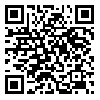شمارۀ جدید فصلنامه (پاییز1404) منتشر شد
Volume 11, Issue 1 (3-2020)
Social Problems of Iran 2020, 11(1): 233-256 |
Back to browse issues page
Download citation:
BibTeX | RIS | EndNote | Medlars | ProCite | Reference Manager | RefWorks
Send citation to:



BibTeX | RIS | EndNote | Medlars | ProCite | Reference Manager | RefWorks
Send citation to:
Ganji M, Amirmazaheri A, Labibi M. (2020). Discourse struggles in the field of women body manipulation and representation. Social Problems of Iran. 11(1), 233-256. doi:10.29252/jspi.11.1.233
URL: http://jspi.khu.ac.ir/article-1-3258-en.html
URL: http://jspi.khu.ac.ir/article-1-3258-en.html
1- PhD Student in Cultural Sociology, Islamic Azad University, Tehran Branch
2- Associate Professor of Islamic Azad University, Central Tehran Branch. ,Ami.Amir-Mazaheri@iauctb.ac.ir
3- Assistant Professor, Islamic Azad University, Central Tehran Branch
2- Associate Professor of Islamic Azad University, Central Tehran Branch. ,
3- Assistant Professor, Islamic Azad University, Central Tehran Branch
Abstract: (3275 Views)
The present article studies the discourse conflicts and inverted readings of the body in the field of the body and its representation. By focusing on Foucault's genealogical method (analyzing the resistance and discursive accidents) about power relations and body manipulation w come to perceive a specific model of the relationship between power and existing signifiers in social and cultural context of society over the body of women. Because the body of women is considered as a text. This study shows that the representation and manipulation of the body of women reflects the power relations and dominant discourses in society at any historical point. In fact, the main question that this article tries to answer is how the ruling system or systems of discourse in society cause the body to be represented, manipulated, and read. In other words, why has the representation and manipulation of the body been read differently in different periods in the field of symbols and meanings? What social and cultural conditions have aesthetic standards influenced in each discourse? Can traces of power and discourse be sought in how the body is manipulated? The findings of this study show that the management and governance of women's body is not fully consistent with their chosen conditions and their structures are based on ideologies and the type of discourse prevailing in certain historical periods in every period of history. In the process of "power", the body becomes a discourse of reproduction and institutionalization.
Type of Article: Original Research |
Received: 2020/09/13 | Accepted: 2020/03/29 | Published: 2020/09/16
Received: 2020/09/13 | Accepted: 2020/03/29 | Published: 2020/09/16
References
1. اباذری، یوسف و نفیسه حمیدی (1387) «جامعهشناسی بدن و پارهای مناقشات»، پژوهش زنان، دورۀ ششم، شمارۀ 4: 127-160.
2. ابراهیمی، قربانعلی و عباس بهنوئی گدنه (1389) «سرمایۀ فرهنگی، مدیریت ظاهر و جوانان (مطالعه دختران و پسران شهر بابلسر)»، زن در توسعه و سیاست، دورۀ هشتم، شمارۀ 3: 153-176.
3. احمدنیا، شیرین (1384) «جامعهشناسی بدن و بدن زن»، فصل زنان، شمارۀ 5.
4. اعتمادی فرد، سیدمهدی و ملیحه امانی (1392) «مطالعۀ جامعهشناختی انگیزۀ زنان از گرایش به جراحیهای زیبایی»، پژوهشنامۀ زنان، سال چهارم، شمارۀ ۲: 1-22.
5. آزادارمکی، تقی و حسن چاوشیان (1381) «بدن بهمثابۀ رسانه هویت»، مجلۀ جامعهشناسی ایران، دورۀ چهارم، شمارۀ 4: 57-75.
6. برگر، پیتر. ال و توماس لاکمن (1375) (ساخت اجتماعی واقعیت) رسالهای در جامعهشناسی شناخت، ترجمۀ فریبرز مجیدی، تهران: انتشارات علمی و فرهنگی.
7. بروتون، داویدلو (1392) جامعهشناسی بدن، ترجمۀ ناصر فکوهی، تهران: نشر ثالث.
8. بودریار، ژان (1389) جامعۀ مصرفی، ترجمۀ پیروز ایزدی، تهران: نشر ثالث.
9. ذکایی، محمدسعید و مریم امنپور (1392) درآمدی بر تاریخ فرهنگی بدن، تهران: انتشارات تیسا.
10. رضایی، احمد، مینا اینانلو و محمد فکری (1389) «مدیریت بدن و ارتباط آن با عوامل اجتماعی در بین دختران دانشگاه مازندران»، مطالعات راهبردی زنان، فصلنامۀ شورای فرهنگی- اجتماعی زنان، دورۀ دوازدهم، شمارۀ 47: 141-170.
11. رفعت جاه، مریم (1386) «هویت انسانی زن در چالش آرایش و مد»، مطالعات راهبردی زنان، فصلنامۀ شورای فرهنگی- اجتماعی زنان، دورۀ دهم، شمارۀ 38: ۱۳۵- 179.
12. ریترز، جرج (1374) نظریههای جامعهشناسی دوران معاصر، ترجمۀ محسن ثلاثی، چ۳، تهران: انتشارات علمی.
13. سراج زاده، حسين، محمدجواد غلامرضاكاشي، مینا هلالي ستوده (1391) «گفتمان جامعه پاک: شالوده شکني سياست نمايش بدن زنانه در دوره پهلوي»، دوره 8، شماره 26: 27-50.
14. شهابی، محمود (1384) تکنولوژی- فرهنگ ظاهرآرایی و زیباسازی بدن در ایران، تهران: پژوهشگاه فرهنگ، هنر و ارتباطات.
15. فاتحی، ابوالقاسم و ابراهیم اخلاصی (1389) «گفتمان جامعهشناسی بدن و نقد آن بر مبنای نظریۀ حیات معقول و جهانبینی اسلامی»، معرفت فرهنگی اجتماعی، شمارۀ 2.
16. فوکو، میشل (1382) مراقبت و تنبیه (تولد زندان)، ترجمۀ نیکو سرخوش و افشین جهاندیده، تهران: نشر نی.
17. گافمن، اروینگ (1386) داغ ننگ: چارهاندیشی برای هویت ضایعشده، تهران: چاپ مرکز.
18. میلز، سارا (1389) میشل فوکو، ترجمۀ داریوش نوری، تهران: نشر مرکز.
19. نش، کیت (1382) جامعهشناسی سیاسی معاصر، جهانیشدن، سیاست، قدرت، ترجمۀ محمدتقی دلفروز، تهران: انتشارات کویر.
20. Bourdieu, Pierre (1979), Distinction: A Social Critique of the Judgment of Taste, Cambridge, MA: Harvard University Press.
21. Douglas, M. (1996), Purity and Danger: An Analysis of the Concepts of pollution And Taboo, London: Routledge.
22. Elliott, A. (2008), Contemporary Social Theory, London: Routledge. [DOI:10.4324/9780203930540]
23. Shilling, C. (1993), The Body and Social Theory, London: Sage.
24. Simmel, G. (1957) {1904}, " Fashion", American Journal of Sociology, 62 (6): 541-558. [DOI:10.1086/222102]
25. Synnott, Anthony (1993) The Body Social: Symbolism, Self and Society, London: Routledge.
26. Swami, Viren et al. (2010), "The Attractive Female Body Weight and Female Body Dissatisfaction in 26 Countries across 10 World Regions: Result of The International Body Project I", Personality and Social Psychology Bulletin, 36 (3): 309-325. [DOI:10.1177/0146167209359702]
27. The Economist (2003) Post of Promise: The Beauty Business, 22 May.
28. Veblen, T. (1992) The Theory of Leisure Class, London: Transaction Publishers.
Send email to the article author
| Rights and permissions | |
 |
This work is licensed under a Creative Commons Attribution-NonCommercial 4.0 International License. |







